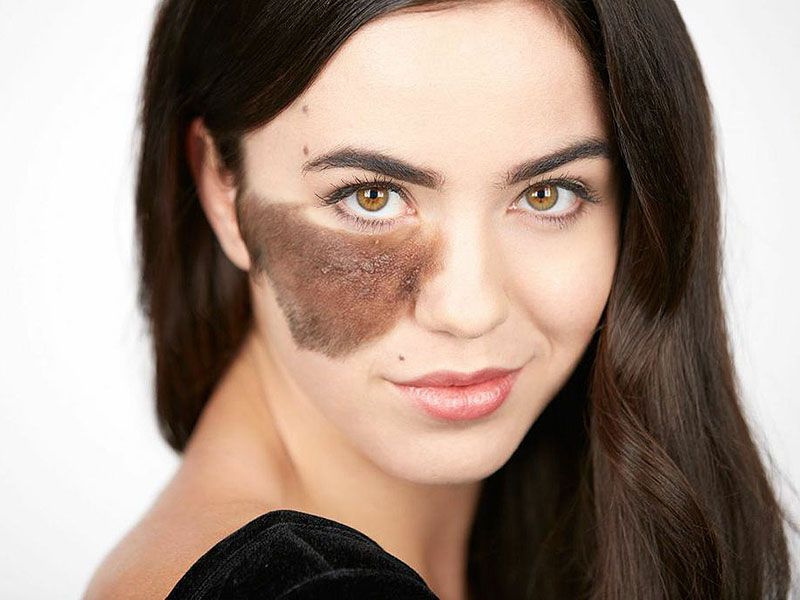Key Takeaways
-
Understanding the type of birthmark you have is crucial before considering removal options, as it directly impacts the choice of treatment.
-
There are various treatment options available, including laser therapy, surgery, and topical medications. Consulting with a dermatologist can help you choose the most effective method for your specific case.
-
Preparing for birthmark removal involves a thorough consultation with a healthcare provider to discuss potential outcomes, necessary pre-treatment care, and setting realistic expectations.
-
Being aware of the risks associated with each removal technique, such as scarring or changes in skin texture, is essential for making an informed decision.
-
Proper aftercare following birthmark removal is vital for healing and achieving the best possible results. This includes following your doctor’s advice on wound care and avoiding sun exposure.
-
The decision to remove a birthmark is personal and should be made based on accurate information and professional medical advice, considering both aesthetic desires and health implications.
Understanding Birthmarks
Types Defined
Birthmarks are unique marks that appear on the skin at birth or shortly thereafter. They come in various shapes, sizes, and colors. Hemangiomas are common vascular lesions that may appear as raised, bright red marks due to abnormal blood vessels under the skin. Sebaceous nevi, another type, often present as yellowish or orangish patches and can become more pronounced with age. Moles, while not always present at birth, can also be considered birthmarks when they appear early in life.
These marks vary widely in appearance. Some remain small and inconspicuous throughout a person’s life, while others grow or change color.
Causes Explored
The exact cause of many birthmarks remains unknown, but genetic and environmental factors play a role. Abnormal blood vessels are responsible for vascular birthmarks like hemangiomas. Other types, such as pigmented birthmarks, result from clusters of pigment cells.
Research suggests that some birthmarks could be linked to genetic mutations. Environmental factors during pregnancy might also influence their development.
Medical Concerns
It’s crucial to distinguish between harmless birthmarks and those that may pose medical concerns. While many birthmarks are benign and require no treatment, some can indicate underlying health issues.
Vascular lesions near the eye or spine, for example, might affect vision or neurological function. In such cases, prompt medical evaluation is essential to determine if treatment is necessary.
Treatment Options Overview
Laser Therapy
Laser therapy stands out for its precision and effectiveness in fading or eliminating certain types of birthmarks. It targets the area without harming surrounding tissues. Most patients need multiple sessions for optimal results. The process promotes healing, making it a preferred choice for many.
Laser advancements have introduced more efficient techniques, reducing discomfort and recovery time. These innovations cater to various birthmark types, offering tailored treatments that enhance patient outcomes.
Medications & Injections
For some birthmarks, medications applied topically can reduce appearance or prevent growth. In particular, steroid injections are beneficial for minimizing raised birthmarks. These options are less invasive than surgery and suitable for sensitive areas.
They require patience, as full effects emerge over time. Consulting with a healthcare provider helps determine the best course of action based on the birthmark’s characteristics.
Surgical Removal
Surgical removal is considered when other methods are ineffective or if the birthmark poses health risks. It’s directly related to the type and location of the birthmark. Surgery offers a definitive solution but comes with longer recovery periods and potential scarring.
The decision between surgical and non-surgical treatments hinges on multiple factors, including the birthmark’s impact on health or aesthetics.
Preparing for Removal
Dermatologist Selection
Choosing the right medical professional is crucial. Look for a dermatologist or plastic surgeon with extensive experience in birthmark removal. Their expertise ensures that the removal process, whether it involves surgery or another method, is done safely and effectively.

Patients should research doctors who specialize in treating the type of birthmark they have, whether it’s on the face, back, or other parts of the body. Consulting with several professionals can help individuals feel confident in their choice.
Pre-Operative Steps
Before undergoing removal, an initial consultation is necessary. Here, the doctor will examine the birthmark’s size, color, and depth to determine the best course of action. They might take photos for medical records.
Patients will receive instructions on how to prepare for surgery or treatment. These may include avoiding certain medications or applying specific creams to ensure healthy skin before the procedure.
Psychological Preparation
For children facing birthmark removal, parental support is vital. Parents should talk openly about the procedure, focusing on its benefits and why it’s happening. This helps reduce anxiety and builds trust in the medical team.
It’s also important for adults to mentally prepare themselves. Understanding that results can vary and that some procedures might require time to show full effects is part of setting realistic expectations for oneself.
Risks and Aftercare
Surgical Risks
Surgical removal of birthmarks carries certain risks. Infection is a primary concern, requiring patients to closely monitor the site for signs like redness or swelling. There’s also a risk of scarring, especially in more visible areas. Rare cases may lead to changes in skin sensation or color around the treated site.
Patients should discuss these potential outcomes with their doctor beforehand. Understanding these factors helps manage expectations and prepare for any necessary follow-up treatments.
Non-Surgical Complications
Non-surgical methods, including laser therapy, have their own set of concerns. Skin irritation and temporary discoloration are common. In some instances, particularly with deeper lesions, multiple sessions may be needed over years to achieve desired results.
Parents considering treatment for their child should weigh these pros and cons carefully. Consulting with a specialist can provide clarity on the best course of action based on the specific type of birthmark and its location.
Post-Procedure Care
After birthmark removal, proper wound care is crucial. This includes keeping the area clean and applying prescribed ointments to promote healing. Patients should watch for any signs of infection and report them to their doctor immediately.
Managing discomfort with recommended pain relievers and avoiding direct sunlight on the treated area are important steps. Follow-up visits are essential to monitor healing and discuss additional treatments if needed.
Ensuring coverage by insurance is also key, as some procedures might not be covered under standard health policies. It’s advisable to confirm this with both the insurance provider and the hospital prior to proceeding.
Summary
Understanding your birthmarks and the options available for their removal is crucial. With a variety of treatments at your disposal, it’s essential to prepare adequately and be aware of the potential risks and necessary aftercare. This knowledge empowers you to make informed decisions about whether birthmark removal is right for you. Remember, each treatment carries its own set of considerations, but with the right preparation and care, you can achieve satisfying results. Your journey towards clearer skin doesn’t have to be daunting; armed with the right information, you can navigate this path confidently.
Taking that step towards removing a birthmark is a personal decision that requires thought and expert advice. If you’re considering this option, consult with a specialist who can provide tailored advice based on your unique situation. Don’t let uncertainty hold you back; seek professional guidance today and take control of your skin’s appearance. Your confidence and comfort in your own skin are worth it.
Frequently Asked Questions
What are birthmarks and why do they occur?
Birthmarks are skin markings present at birth or shortly after. They’re caused by overgrowth of blood vessels, melanocytes, smooth muscle, fat, fibroblasts, or keratinocytes.
What treatment options are available for birthmark removal?
Treatment options include laser therapy, surgical removal, and in some cases, steroid medications or creams depending on the type of birthmark.
How should I prepare for a birthmark removal procedure?
Consult with a dermatologist to choose the best method. You may need to avoid certain medications and skincare products before the procedure.
Are there any risks associated with birthmark removal?
Yes, risks can include scarring, changes in skin texture or color, and in rare cases, infection. Discuss potential risks with your doctor beforehand.
What does aftercare involve post-birthmark removal?
Aftercare typically involves keeping the area clean and protected from sunlight. Follow your doctor’s specific instructions for optimal healing.
Can all types of birthmarks be removed?
Not all birthmarks can be completely removed. The success depends on the type, size, and location of the birthmark. Consultation with a specialist is essential.
How long does it take to see results from birthmark removal treatments?
Results can vary widely depending on the treatment method used. Some treatments show immediate improvement while others require multiple sessions over months.




